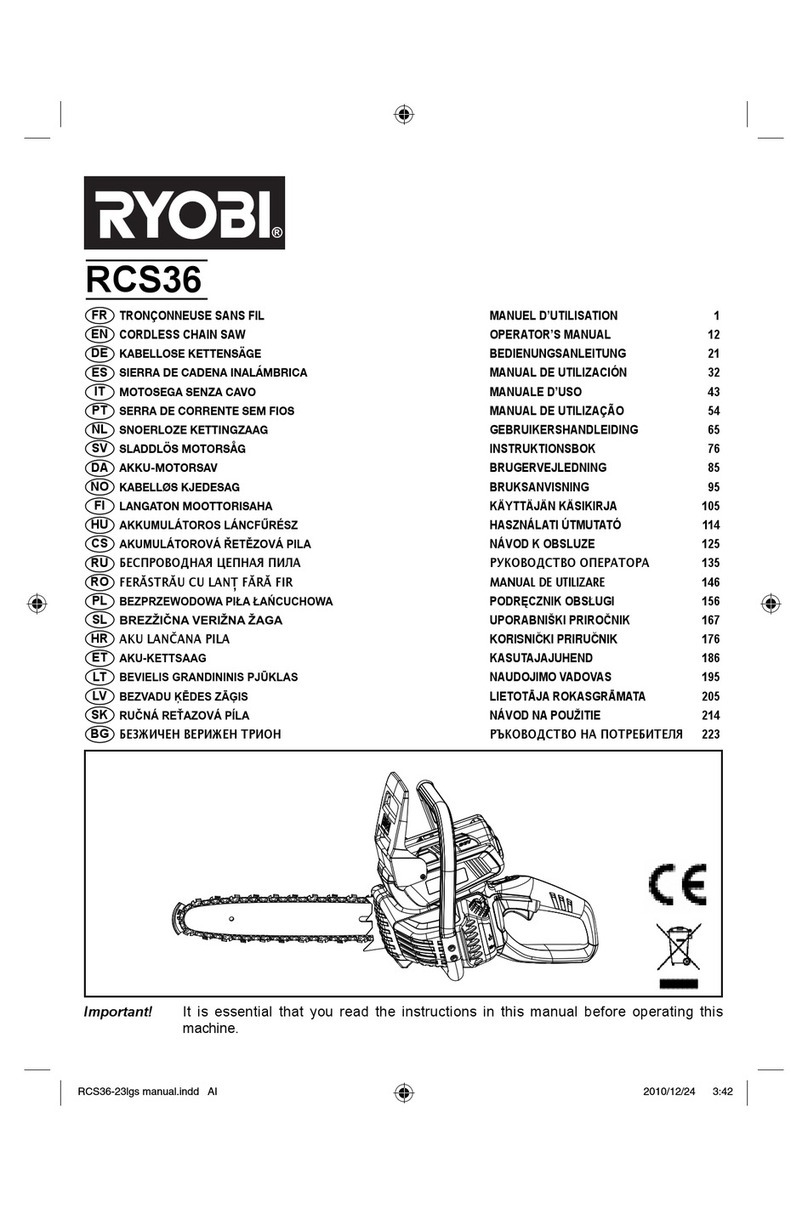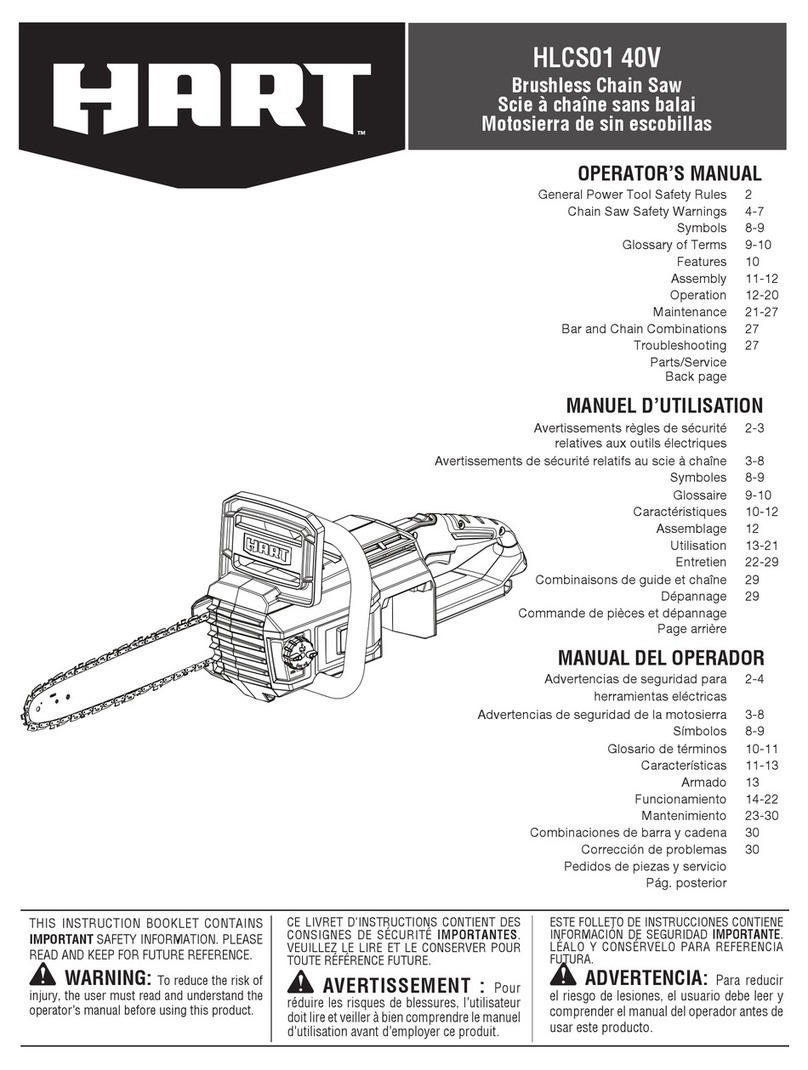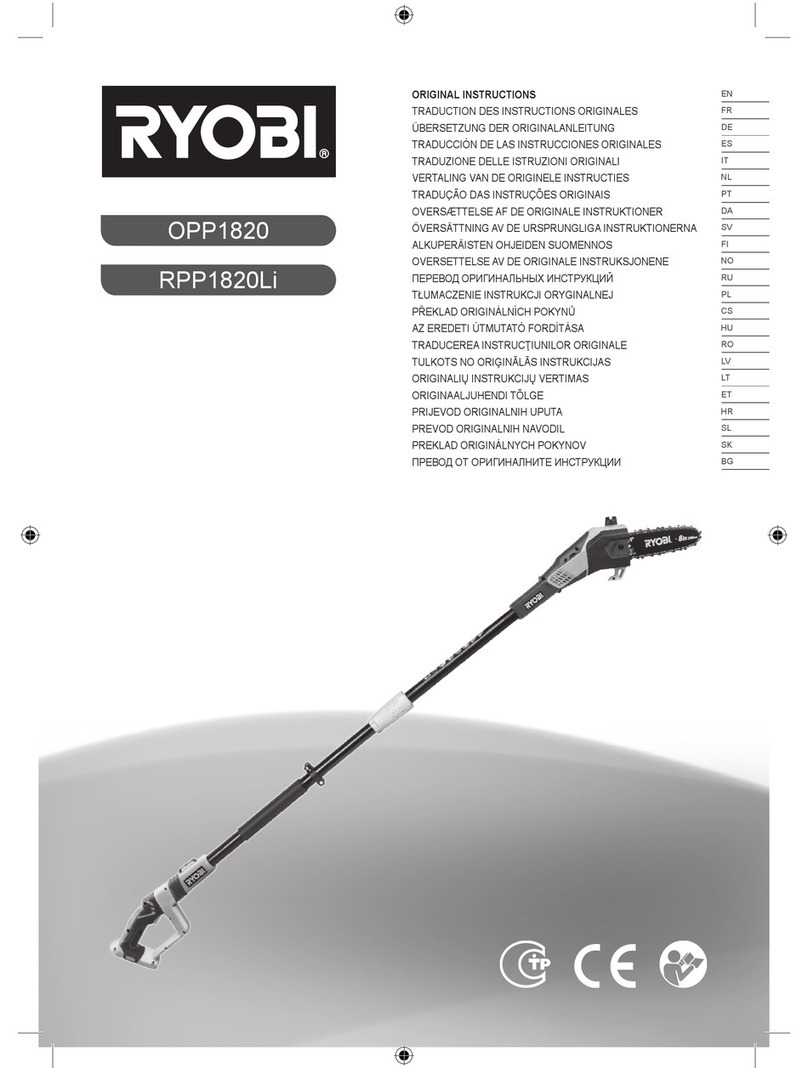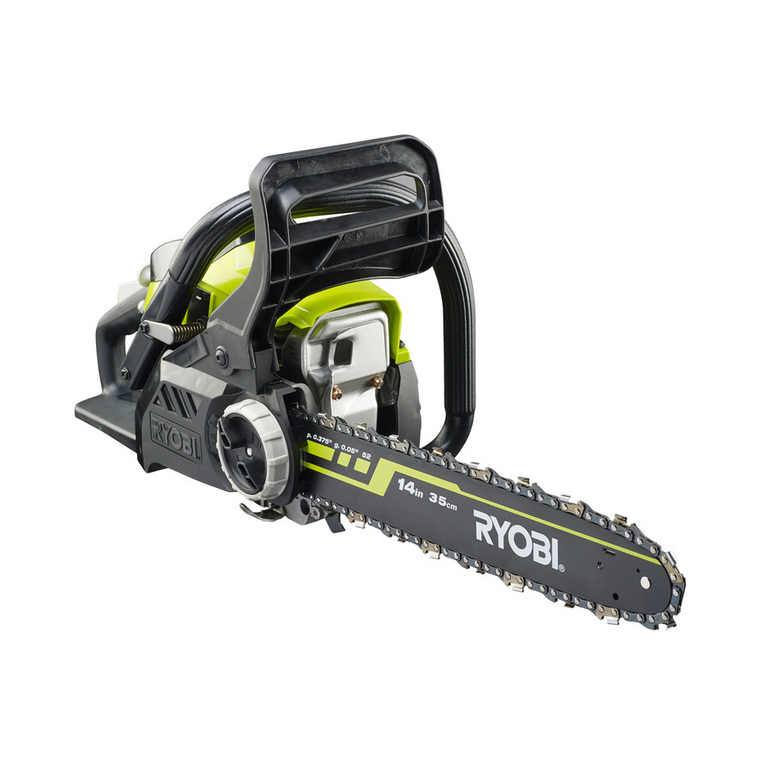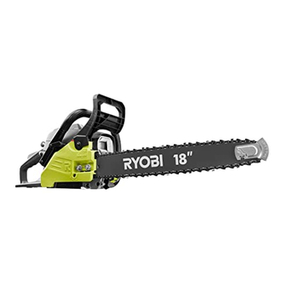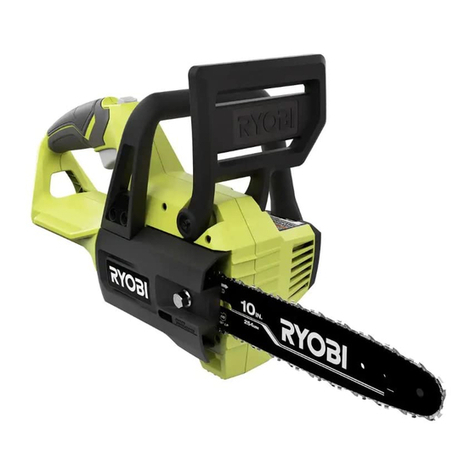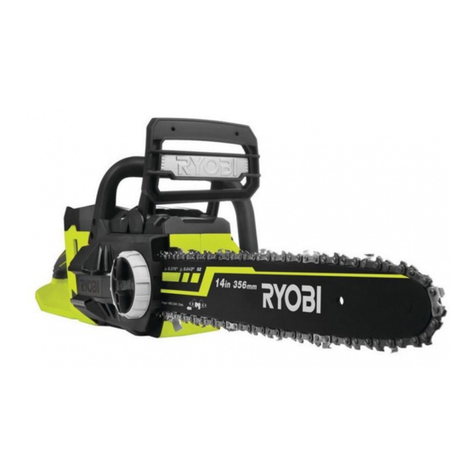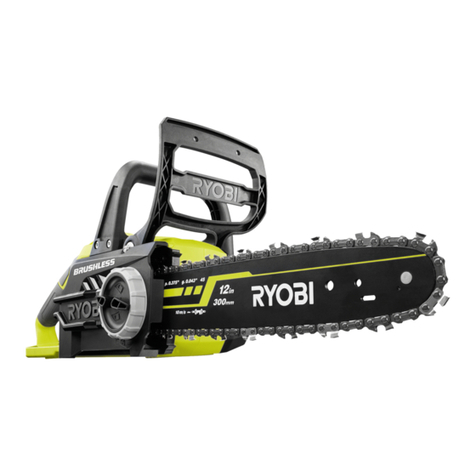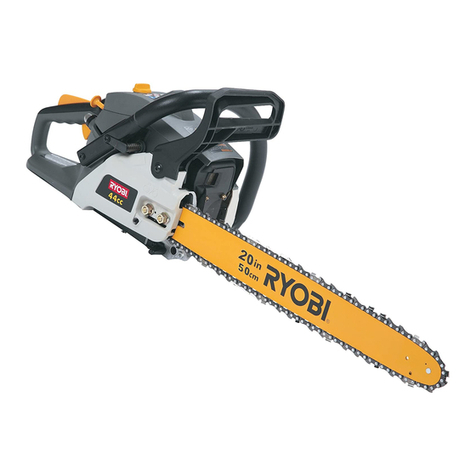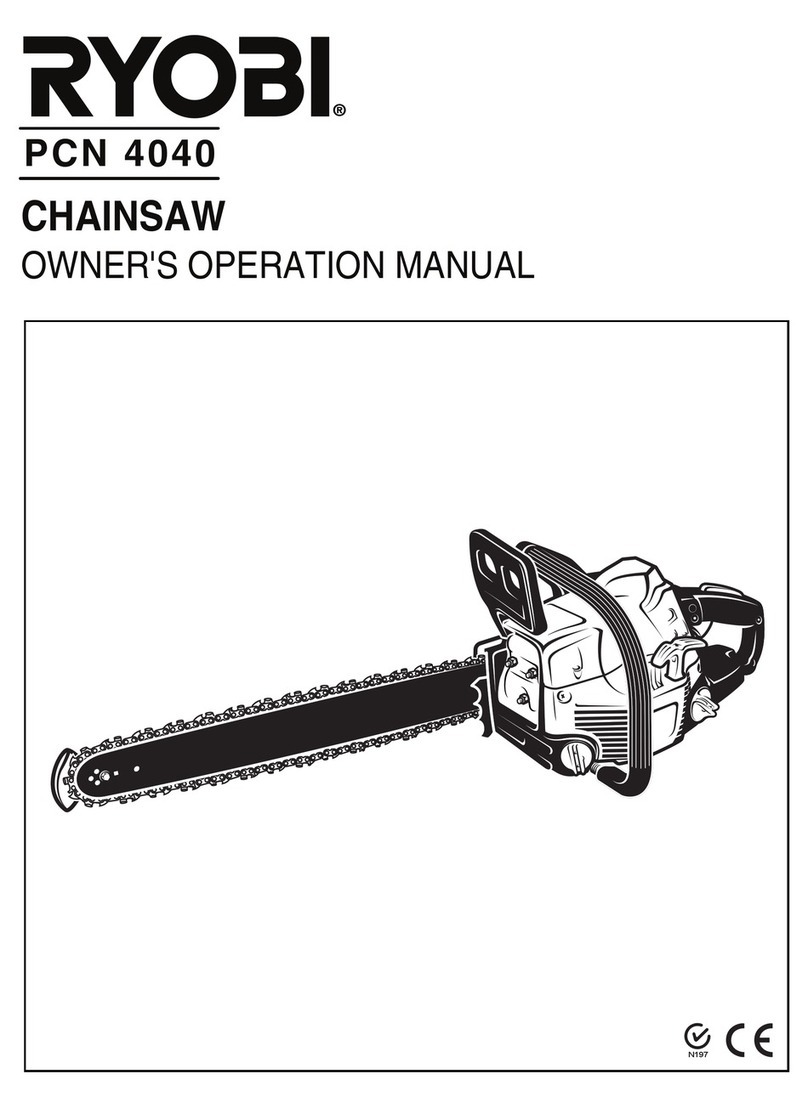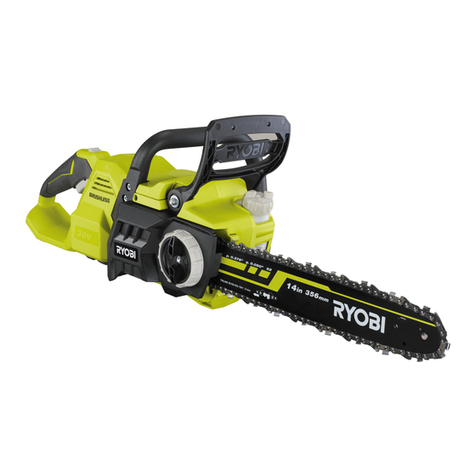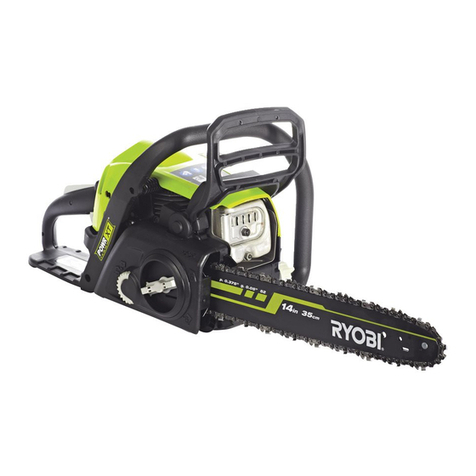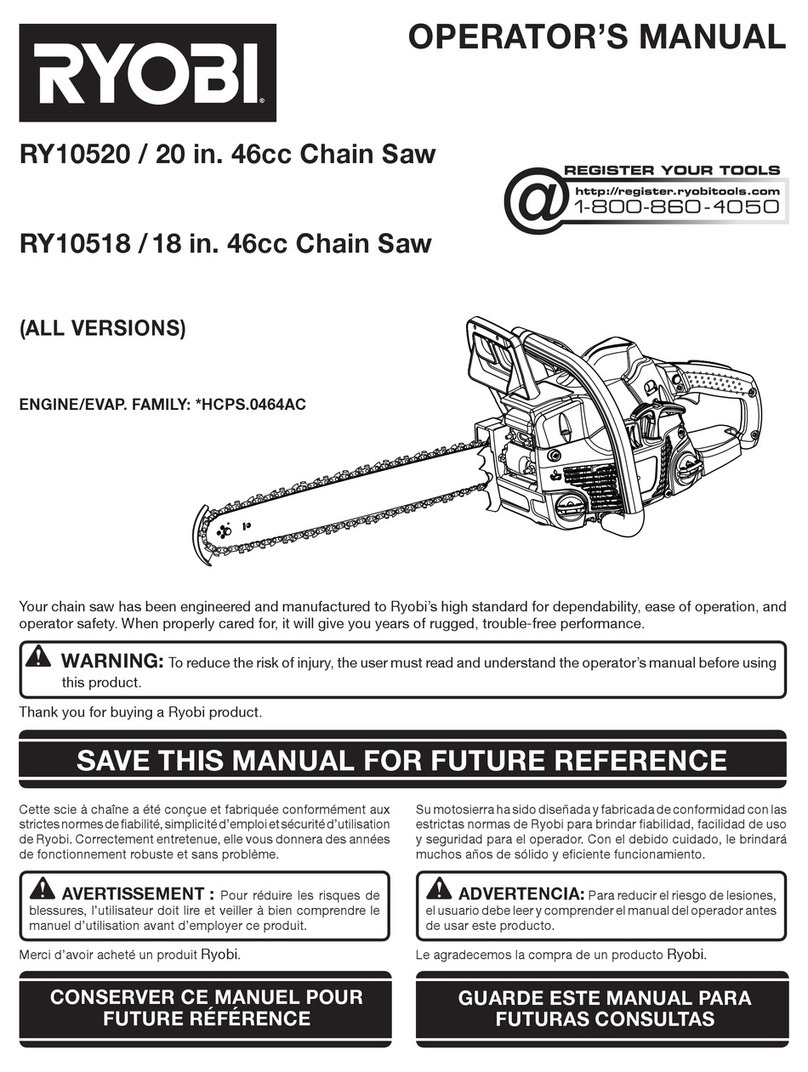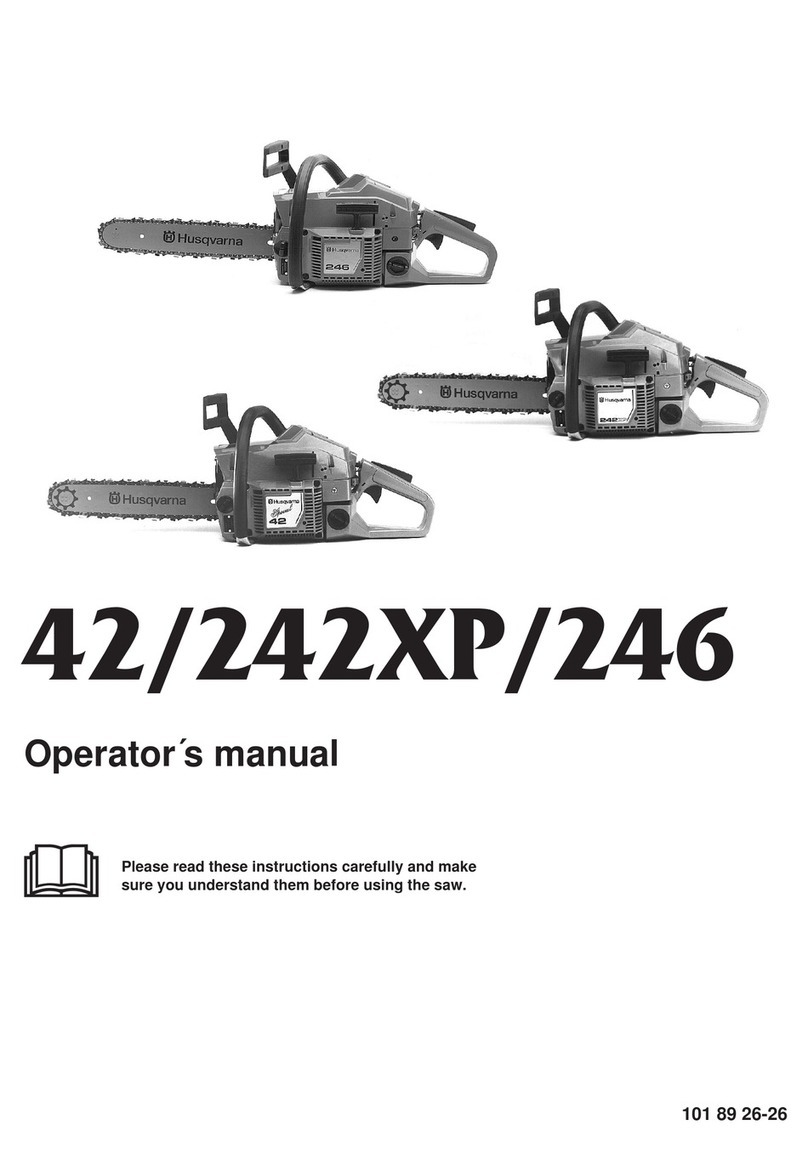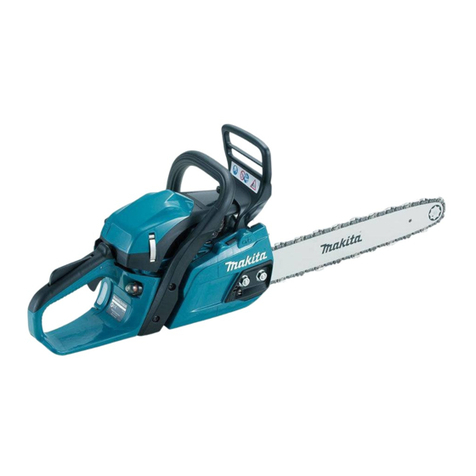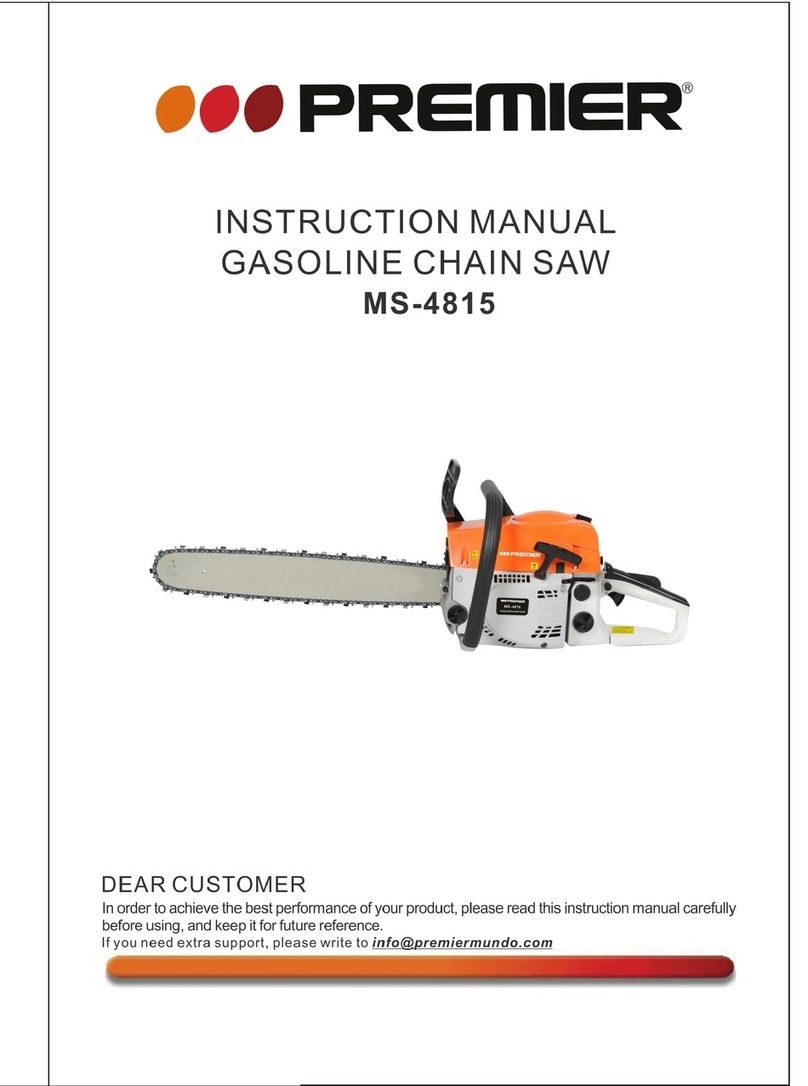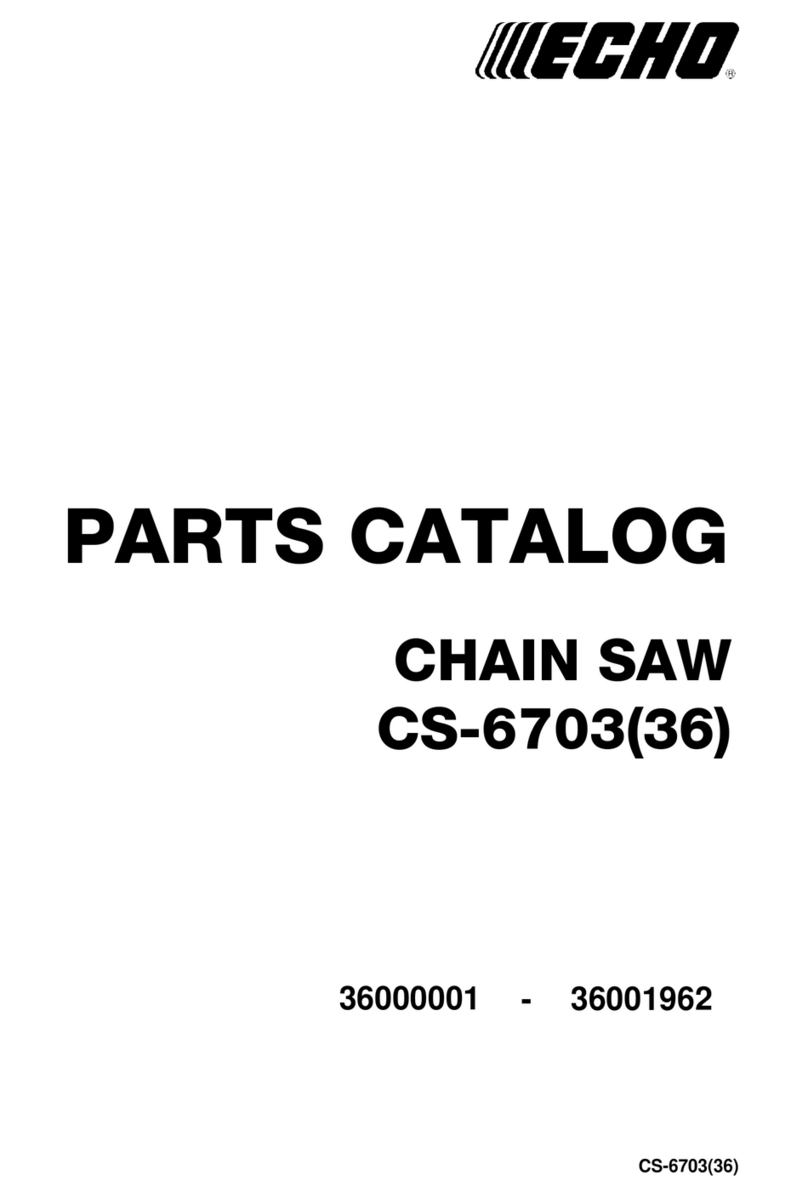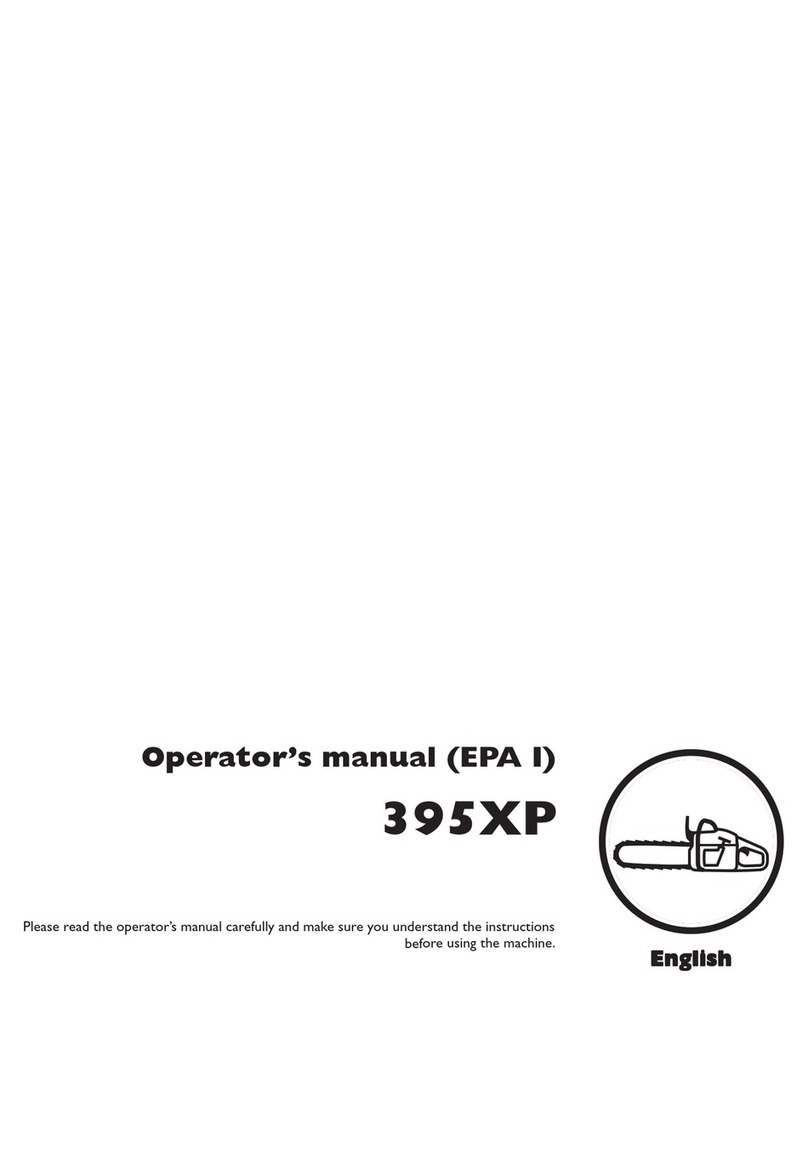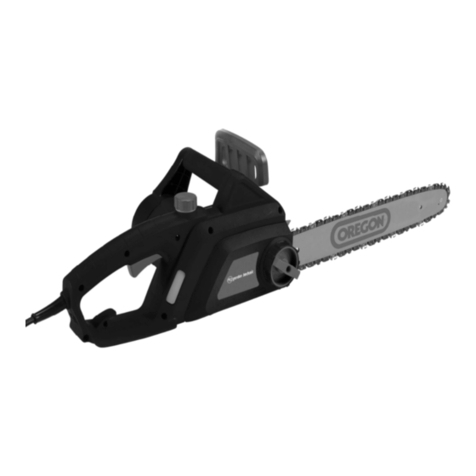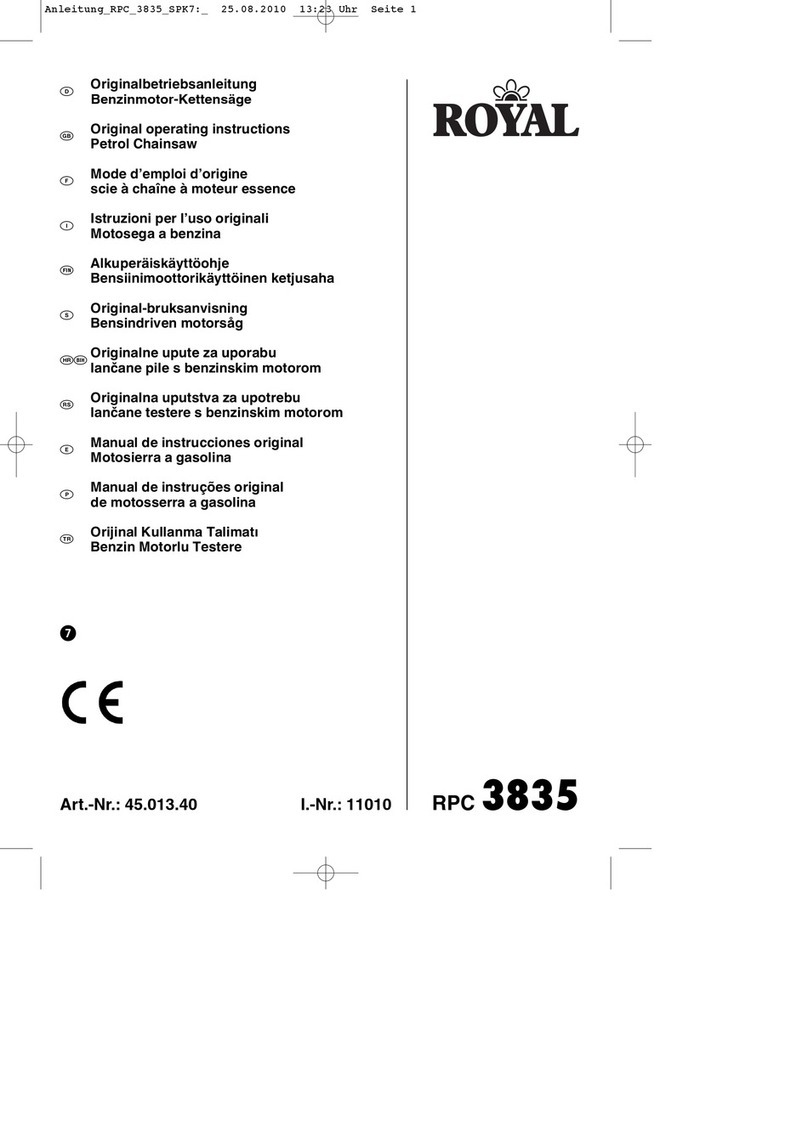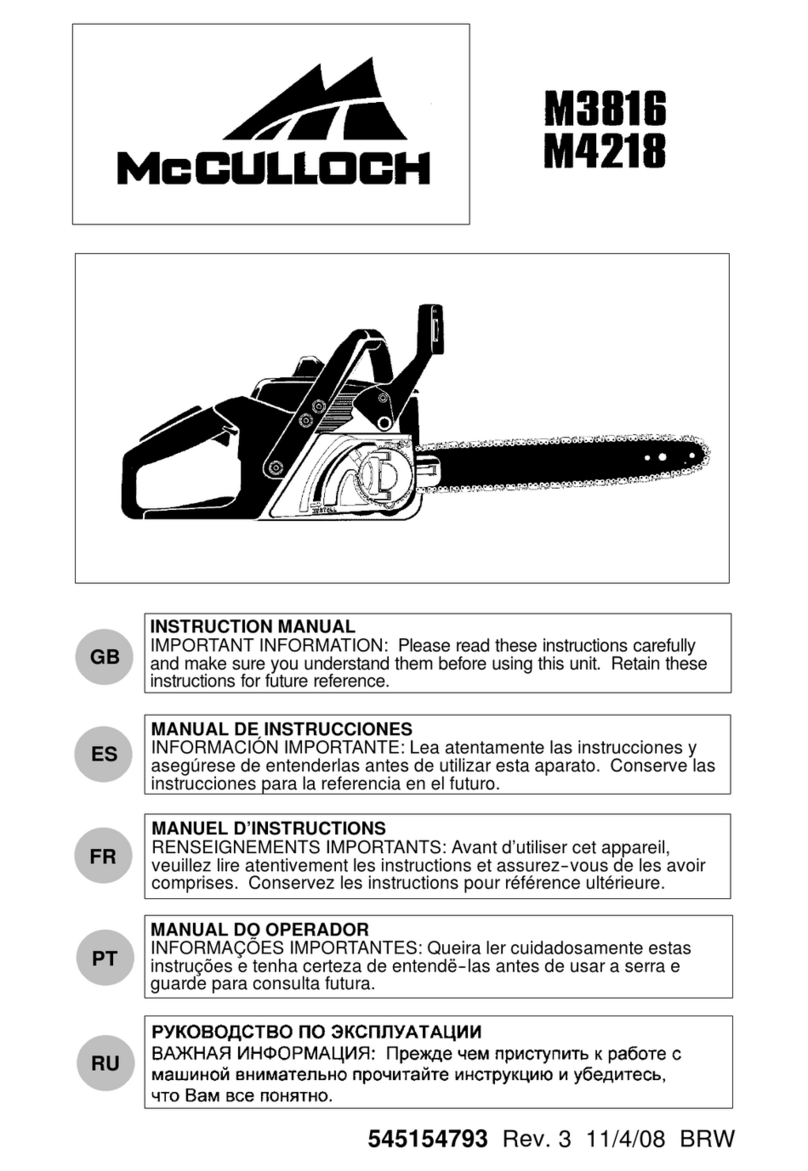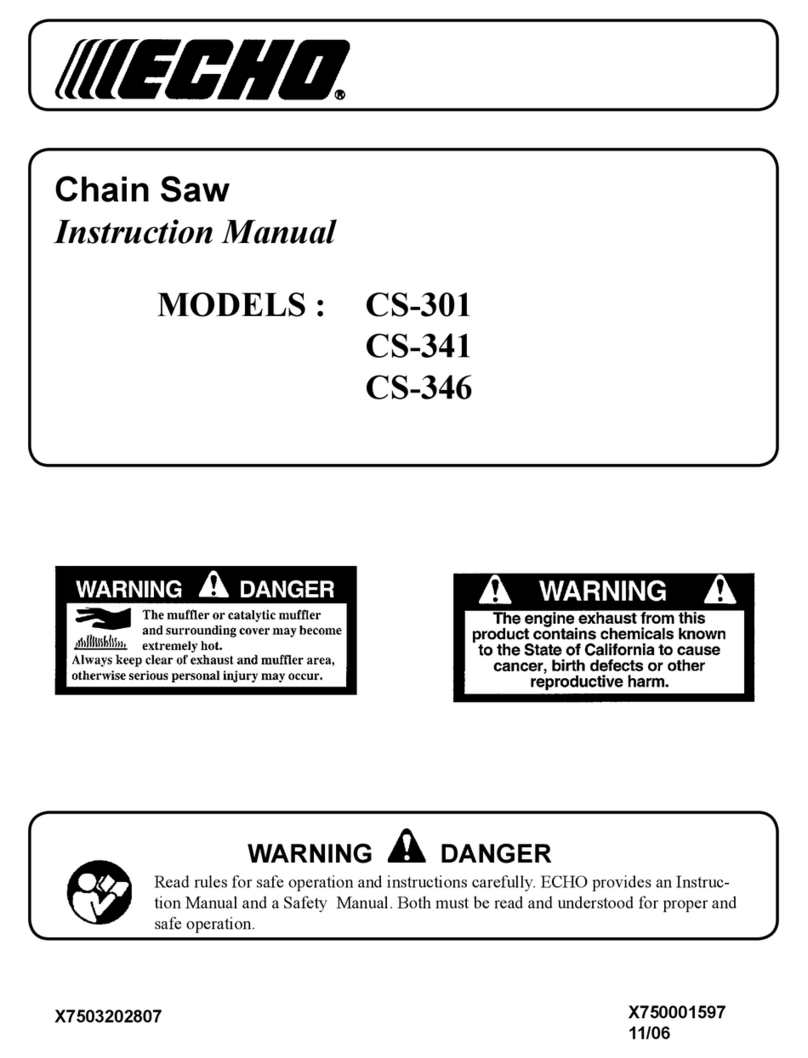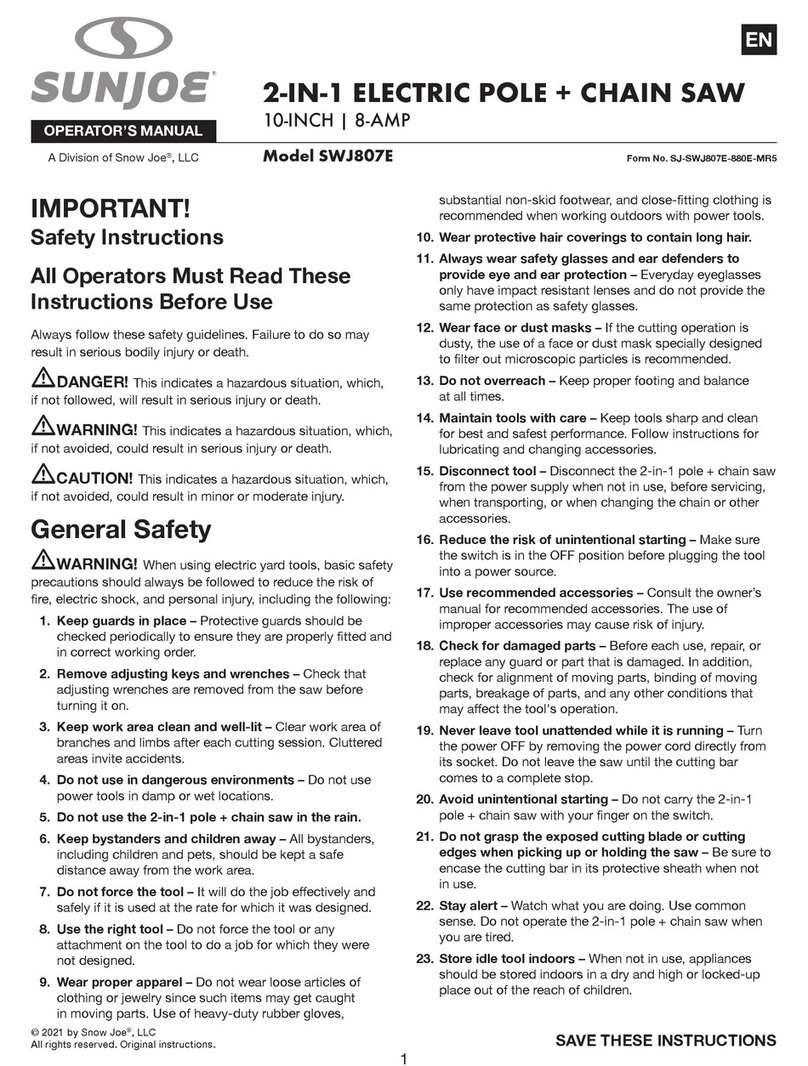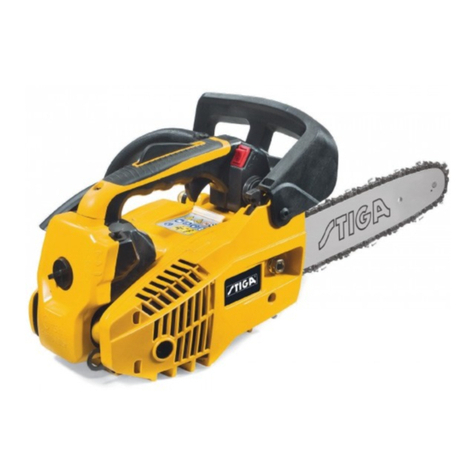3
Make sure the power cord is positioned so that it
cannot be damaged by the cutting means and will not
be stepped on, tripped over, or otherwise subjected to
damage or stress.
Never pick up or carry the product by the electric cable.
Never pull the power cord to disconnect from the power
supply.
Keep the power cord away from heat, oil, and sharp
edges.
CHAINSAW SAFETY WARNINGS
Keep all parts of the body away from the saw
hain when operating the produ t. Before you
start the hainsaw, make sure the saw hain is not
onta ting anything. A moment of inattention while
operating chainsaws may cause entanglement of your
clothing or body with the saw chain.
Always hold the hainsaw with your right hand
on the rear handle and your left hand on the front
handle. Holding the chainsaw with a reversed hand
configuration increases the risk of personal injury and
should never be done.
Hold the power tool by gripping surfa e only,
be ause the saw hain may onta t hidden wiring
or its own ord. aw chains contacting a !live" wire
may make exposed metal parts of the power tool !live"
and could give the operator an electric shock.
Wear safety glasses and hearing prote tion. Further
prote tive equipment for head, hands, legs and feet
is re ommended. Adequate protective clothing will
reduce personal injury by flying debris or accidental
contact with the saw chain.
Do not operate a hainsaw in a tree. Operation of
a chainsaw while up in a tree may result in personal
injury.
Always keep proper footing and operate the
hainsaw only when standing on fixed, se ure and
level surfa e. lippery or unstable surfaces such as
ladders may cause a loss of balance or control of the
chainsaw.
When utting a limb that is under tension be alert
for spring ba k. When the tension in the wood fibres is
released the spring loaded limb may strike the operator
and/or throw the chainsaw out of control.
Use extreme aution when utting brush and
saplings. The slender material may catch the saw
chain and be whipped toward you or pull you off
balance.
Carry the hainsaw by the front handle with the
hainsaw swit hed off and away from your body.
When transporting or storing the hainsaw always
fit the guide bar over.
chainsaw will reduce the likelihood of accidental contact
with the moving saw chain.
Follow instru tions for lubri ating, hain tensioning
and hanging a essories. Improperly tensioned
or lubricated chain may either break or increase the
chance for kickback.
Keep handles dry, lean, and free from oil and
grease. Greasy, oily handles are slippery causing loss
of control.
Cut wood only. Do not use hainsaw for purposes
not intended. For example: do not use hainsaw
for utting plasti , masonry or non-wood building
materials. Use of the chainsaw for operations different
than intended could result in a hazardous situation.
Causes and operator prevention of ki kba k:
Kickback may occur when the nose or tip of the guide bar
touches an object, or when the wood closes in and pinches
the saw chain in the cut.
Tip contact in some cases may cause a sudden reverse
reaction, kicking the guide bar up and back towards the
operator.
push the guide bar rapidly back towards the operator.
Either of these reactions may cause you to lose control of
the saw which could result in serious personal injury. Do
not rely exclusively upon the safety devices built into your
saw. As a chainsaw user, you should take several steps to
keep your cutting jobs free from accident or injury.
Kickback is the result of tool misuse and/or incorrect
operating procedures or conditions and can be avoided by
taking proper precautions as given below:
Maintain a firm grip, with thumbs and fingers
en ir ling the hainsaw handles, with both hands
on the saw with your body and arms positioned to
allow you to resist ki kba k for es. Kickback forces
can be controlled by the operator, if proper precautions
are taken. Do not let go of the chainsaw.
Do not overrea h and do not ut above shoulder
height. This helps prevent unintended tip contact and
enables better control of the chainsaw in unexpected
situations.
Only use repla ement bars and hains spe ified
by the manufa turer. Incorrect replacement bars and
chains may cause chain breakage and/or kickback.
ADDITIONAL CHAINSAW SAFETY WARNINGS
It is recommended to cut logs on a saw-horse or cradle
when operating the product the first time.
Ensure all guards, handles and spiked bumper are
properly fitted and are in good condition.
The product is heavy, so the operator must be
physically fit. The operator should be alert, have a good
vision, mobility, balance, and manual dexterity. If there
is any doubt, do not operate the product.
Do not start using the product until you have a clear
work area, secure footing, and a planned retreat path
away from the falling tree.
Beware of the emission of lubricant mist and saw dust.
Wear a mask or respirator, if required.
Always keep the power cable tidy and away from the
area of cutting. Apart from the danger of electrocution,
untidy cables cause falls and trips.
